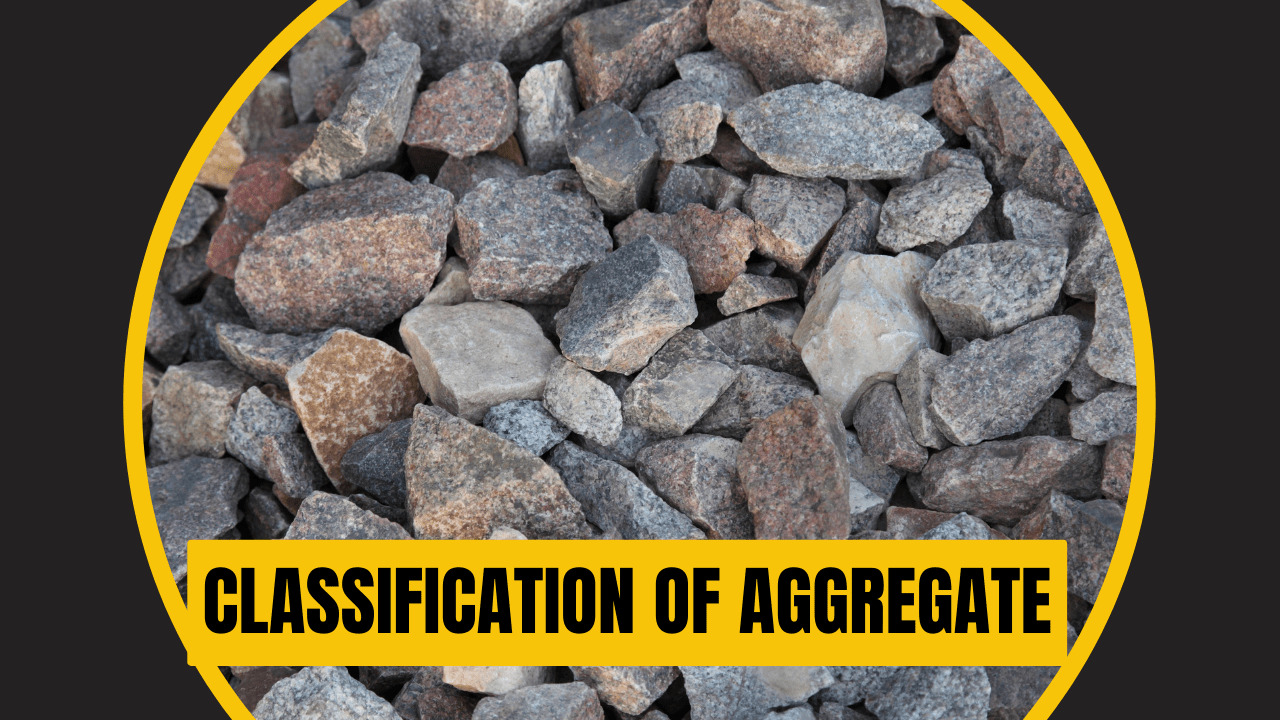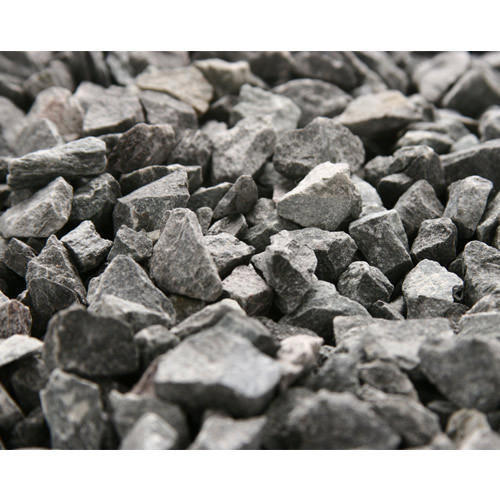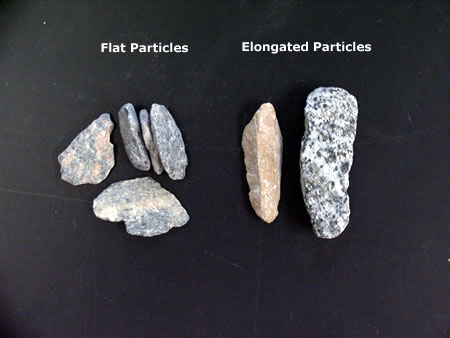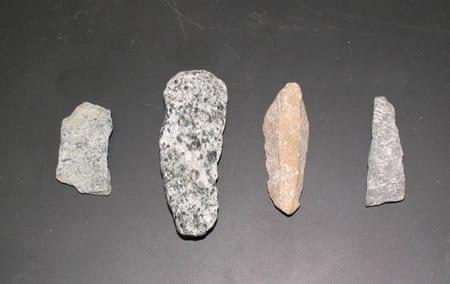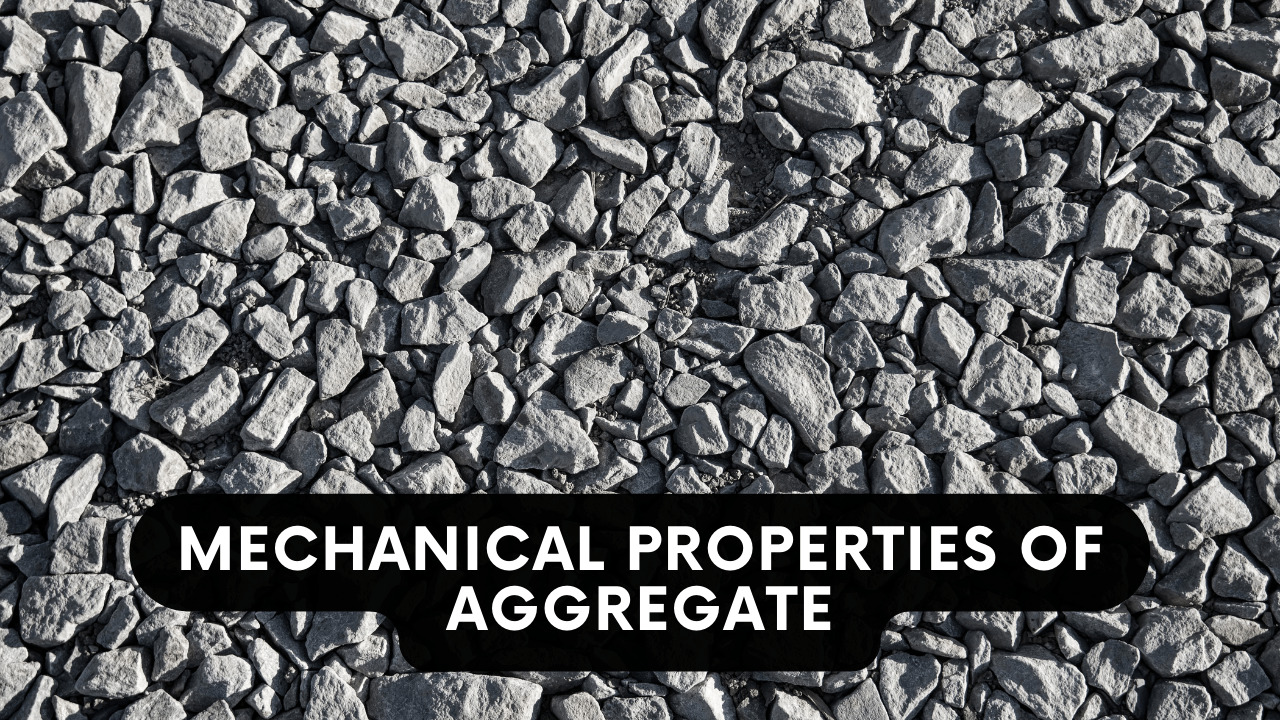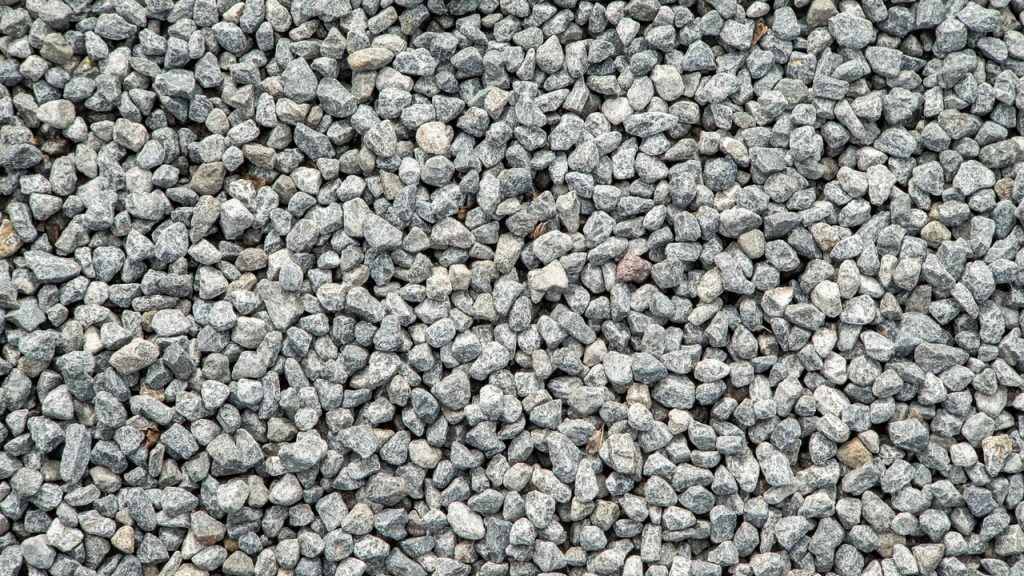In this article, we will talk about the aggregates with their different types and uses of aggregates in construction. Let’s start with the introduction of aggregates.
Table of Contents
What is Aggregate?
It is a coarse building material used in manufacturing concrete and mortar by mixing it with sand and cement. There are many types of aggregates like:
- gravel
- Slag
- Recycled concrete
- Crushed Stones

The origin of aggregates is mainly from the rocks that can be igneous, metamorphic, and sedimentary. It has a significant role in the performance of concrete because it gives volume to the concrete. Almost 70-80% portion of concrete is composed of aggregates. The workability of concrete is highly dependent on the type of aggregate.
The strength of concrete majorly depends upon the selection of aggregates. This selection involves different tests on aggregate to check its stability. Their shape, size, texture, and other properties counted for their suitability while using it in a concrete mixture.
Now when it comes to sourcing aggregate, that all comes down to how much aggregate you need, what you need the aggregate for, as well as where you are located. If you only need a small amount of aggregate, there are stone yards and landscaping yards where you can find all the aggregate you need.
If you are working on a large construction project or something that requires a significant amount of aggregate, then you might need to reach out to a professional. For reference, if you are working a job site in central Texas and need 22 tons of aggregate, your best bet would be to find a reputable aggregate hauler in Austin.
Requirements of an Aggregate
- Sufficient durability.
- Strong enough to bear the strength.
- It would not show any reaction while mixing with concrete.
- It should be free from dirt and any other impure material.
- It contains fewer voids.
- It should have the ability to get bound with cement and concrete.
- Water absorption should be less than 5%.
Applications of an Aggregate
- Its main application is the formation of concrete.
- Roads and railroads
- Formation of foundations
- French and septic drains
Classification of Aggregates
The classification of aggregates is based on their shape, size, origin, and many other characteristics. For this article, we shall deal with the shape and size classification.
Aggregates based on their shape
This type of classification involves the shapes of aggregates. The shape of aggregates is considerable for the workability of concrete. These are the following types of aggregates.
- Rounded Aggregates
- Irregular Aggregates
- Angular Aggregates
- Flaky Aggregates
- Elongated Aggregates
- Flaky and Elongated Aggregates
1)Rounded Aggregates
The aggregates with a round shape have voids ranging from 30-33% are known as rounded aggregates.
- Due to their large area, they need less cement to form a paste.
- They have the poor interlocking ability.
- They are not suitable for high-strength concrete.
- Available at rivers, seashores, and deserts.
2)Irregular Aggregates
The aggregates with partially round shapes have voids ranging from 35-38% are known as Irregular aggregates.
- They need more cement to form a paste.
- They have better interlocking ability than round aggregates.
- They are not appropriate for high-strength concrete.
- Their examples are pit sands and gravel.
 3)Angular Aggregates
3)Angular Aggregates
The aggregates with sharp angular shapes with maximum voids ranging from 38-40% are called Angular aggregates. They are preferable for the formation of concrete.
- They can form a strong bond with cement due to their interlocking property.
- It required sufficient cement paste for the proper workability of concrete.
- They have more compressive strength than the other aggregates.
- They are suitable for high-strength concrete.
- Crushed rock is an example of an angular aggregate.
4)Flaky Aggregates
The aggregates with less dimension of its thickness than its length are known as flaky aggregates. They are not recommended for the manufacturing of concrete. A small percentage of this type is allowed to place in concrete for better results.
- They have low performance in the workability of concrete.
- They can be damaged easily.
- They are not good for high-strength concrete.
- Laminated rocks are an example of flaky aggregates.
5)Elongated Aggregates
In this type, the length of aggregate is 9/5th more than its average dimension. They are also not preferable for concrete strength and stability.
- They are easily liable to damage.
- They can also be responsible for segregation.
- Low Compressive strength.
6)Flaky and Elongated Aggregates
The types in which both flaky and elongated particles are available are known as Flaky and Elongated aggregates. Due to their lesser stability and poor interlocking, they do not satisfy the requirements of good concrete.
Aggregates based on their size
The size of the aggregates is also necessary for the preparation of concrete. The selection of aggregates by their size is the grading of aggregates. It can be done by using different sizes of sieves manually and by using a sieve shaker machine.
There are two basic types of aggregates based on their sizes.
1)Coarse Aggregate
When the particles of an aggregate are retained on sieve # 4 (4.75 mm) and do not pass from them are known as coarse aggregates. It includes cobbles, gravels, and boulders. Coarse Aggregate is one of the main components of concrete.
This chart shows the sizes of coarse aggregates.
| Name of the coarse aggregate | Size range |
| Fine Gravel | 4 to 8 mm |
| Medium Gravel | 8 to 16 mm |
| Coarse Gravel | 16 to 32 mm |
| Very Coarse Gravel | 32 to 64 mm |
| Cobble | 64 to 256 mm |
| Boulder | Greater than 256 mm |
Properties of Coarse Aggregate
There are some properties of coarse aggregates upon which their working is dependable.
- Shape, size, and texture of coarse aggregate
- Specific Gravity
- Soundness
- Water absorption
- Durability
- Strength
2)Fine Aggregate
When the particles of an aggregate passed from sieve # 4 (4.75 mm) are known as fine aggregates. It includes sand, silt, and clay. Its main purpose is to fill the voids that are present between coarse aggregates.
Almost 35-45 % of fine aggregates are used by mass or by volume.
| Name of the fine aggregate | Size range |
| Clay | Less than 0.002 |
| Silt | 0.002 to 0.06 mm |
| Very Fine Sand | 0.0625 to 0.125 mm |
| Fine Sand | 0.125 to 0.25 mm |
| Medium Sand | 0.25 to 0.5 mm |
| Coarse Gravel | 0.5 to 1 mm |
| Very Coarse Sand | 1 to 2 mm |
All in Aggregate
This type of aggregate includes both fine and coarse aggregates. They are represented in the form of nominal sizes like 20 mm, 40 mm, etc.
Uses of Aggregates
As we studied different types of aggregates, there are some uses of aggregates in construction.
- They can be applied in the base, sub-base, and surface layer of roads.
- They can be used as fillers and binders.
- To enhance the stability of concrete.
- They increase the volume of concrete.
- To increase the level of compaction.
- They reduce the shrinkage property of concrete.
- They make the concrete cost economical.

